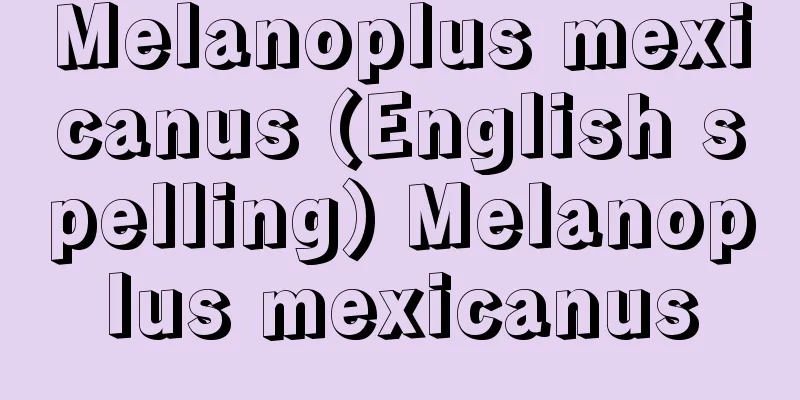Kuonji Temple

|
The head temple of the Nichiren sect, located in Minobu-cho, Minamikoma-gun, Yamanashi Prefecture. Commonly known as Mt. Minobu. After being pardoned from his exile to Sado, Nichiren predicted the Mongol invasion and admonished the shogunate. After his third admonition, in 1274 (Bun'ei 11), he was welcomed by Hakii Rokuro Sanenaga, the land lord of Hakii in Koshu, and entered Nishitani on Mt. Minobu (the site of Gosoan hermitage) on June 17. He stayed there for nine years from the age of 53, claiming that Minobu resembled Mount Vulture Peak, where Shaka preached the Lotus Sutra, and was no different from Mount Tendai, the place where Tendai Daishi performed his religious practices. During that time, many disciples visited the temple, and seven years later, a 10-ken, four-sided main hall was built. Nichiren wrote many works here, including "Kenryu Shoi Sho," "Senji Sho," "Hoon Sho," "Kyogyosho Goji," "Imperial Edicts of the Three Great Secret Laws," and "Bonjo no Koto." He left Minobu at the age of 61 and died at the residence of Ikegami Munenaka in Musashi Province (Tokyo). According to his will, his remains were buried in Minobu, and the six senior monks took turns guarding the mausoleum, each one taking a turn each month. Later, Niko became the head priest of the temple and was considered the second founder. In 1474 (6th year of the Bunmei era), the 11th patriarch Nicho built a large temple at the current site. During the Sengoku period, the temple gained the support of the Takeda clan, and in the Edo period, Toyotomi Hideyoshi's sister Nichinan renovated the temple, and Tokugawa Ieyasu and Hidetada bestowed their stamps on it. The Tokugawa family donated 100,000 koku to the temple, and the temple was granted the title of Shonin by imperial decree. Currently, the temple has many buildings, including the main hall, Soshido, Goshinkotsudo, Sanmon, Shishinkaku (inner sanctuary), and a treasure house. Among its treasures are the colored silk painting "Summer Landscapes" by Huizong (National Treasure), and the Kamakura manuscripts "Honcho Bunsui," "Song Edition of the Book of Rites: Justice," and "Shaka Hassozu" (All Important Cultural Properties of Japan). Shichimensan is a sacred place where Nichirou first started climbing. Events such as Kaibyaku-e (June 15-17) and Oeshiki (October 11-13) are held here. [Tamura Kosuke] [References] | | | | | |The head temple of the Nichiren sect at the foot of Mt. Minobu. It began when Saint Nichiren entered Mt. Minobu in 1274 (Bun'ei 11). In 1474 (Bunmei 6), the Nichijo constructed a large temple at the current location. In the background of the photo is the main hall, which was rebuilt in 1985 (Showa 60). Minobu Town, Minamikoma District, Yamanashi Prefecture © Yamanashi Tourism Organization "> Kuonji Temple Source: Shogakukan Encyclopedia Nipponica About Encyclopedia Nipponica Information | Legend |
|
山梨県南巨摩(みなみこま)郡身延(みのぶ)町にある日蓮(にちれん)宗総本山。通称身延山。日蓮は佐渡流罪赦免後も蒙古(もうこ)襲来を予言し幕府を諫(いさ)めたが、三度目の諫暁(かんぎょう)ののち、1274年(文永11)甲州波木井(はきり)の地頭(じとう)波木井六郎実長(さねなが)の迎えを受けて、6月17日身延山西谷(御草庵(ごそうあん)跡の地)へ入ったのに始まる。身延は、釈迦(しゃか)が『法華経(ほけきょう)』を説いた霊鷲山(りょうじゅせん)に似、天台大師の修法の地天台山に異ならないと称し、53歳より9年間滞在した。その間、多くの弟子が訪れ、7年後に10間四面の本堂が建てられた。日蓮はここで『顕立正意鈔(けんりゅうしょういしょう)』『撰時鈔(せんじしょう)』『報恩鈔(ほうおんしょう)』『教行証(きょうぎょうしょう)御事』『諫暁八幡鈔』『三大秘法稟承事(ぼんじょうのこと)』など多くの著作をなした。61歳のとき身延を出、武蔵(むさし)国(東京都)池上宗仲(いけがみむねなか)の邸(やしき)で没したが、遺言により遺骨は身延へ埋葬され、六老僧が1か月ごとの輪番制で廟(びょう)を守った。のちに日向(にこう)が寺主となり、第二祖とされた。1474年(文明6)第十一祖日朝(にっちょう)が現在の地に大伽藍(がらん)を造営した。戦国時代は、武田氏の帰依(きえ)を得、江戸時代には豊臣(とよとみ)秀吉の姉日秀尼が堂宇を増修、徳川家康・秀忠(ひでただ)が判物を与えた。徳川家により10万石を寄進され、上人(しょうにん)号を勅許された。現在、本堂、祖師堂、御真骨(ごしんこつ)堂、三門、思親閣(ししんかく)(奥の院)、宝物館ほか多くの建物を有し、寺宝に徽宗(きそう)筆絹本着色「夏景山水図」(国宝)、鎌倉古写本『本朝文粋』『宋版礼記(らいき)正義』『釈迦八相(しゃかはっそう)図』(いずれも国重要文化財)などがある。なお、七面山(しちめんざん)は日朗(にちろう)の登山開闢(かいびゃく)の霊地。開闢会(え)(6月15~17日)、御会式(おえしき)(10月11~13日)などの行事を行う。 [田村晃祐] [参照項目] | | | | | |身延山の麓にある日蓮宗の総本山。1274年(文永11)日蓮聖人が身延山に入山したのにはじまる。1474年(文明6)日朝により現在地に大伽藍が造営された。写真奥は1985年(昭和60)に再建された本堂。山梨県南巨摩郡身延町©やまなし観光推進機構"> 久遠寺 出典 小学館 日本大百科全書(ニッポニカ)日本大百科全書(ニッポニカ)について 情報 | 凡例 |
<<: Eternal Realization - Kuonjitsujo
Recommend
Renaissance - Renaissance (English spelling)
This concept has traditionally been used as a cat...
perception
…In ancient Japan, the word “perception” meant “t...
Technology-intensive industry
...(1) Classification based on the use of goods: ...
Genkai Sea
The sea area in northwest Kyushu is called Genkai...
Neue Zeitung (English spelling)
... In Europe, news media similar to woodblock pr...
Claude Lévi‐Strauss
1908‐ French anthropologist. He studied law and ph...
Hyblaea fortissima (English spelling) Hyblaeafortissima
…All of them are active during the day and look s...
Corporate Philosophy
...the basic ideas that the founders and managers...
Fermi surface - Fermi surface
The energy of an electron in a crystal is a functi...
Street performance - daidōgei
It is a general term for street entertainment in ...
Ogburn - William Fielding Ogburn
American sociologist. After graduating from Merce...
Response move - King move
…There are five basic movements: stance, footwork...
Leduc
...In addition to Banff and Jasper, which are kno...
Rolling - Rolling
Also written as Makimuka. A place name referring t...
Xylol - Kishiroll
⇒Xylene Source: About Shogakukan Digital Daijisen ...
![Aso [town] - Aso](/upload/images/67cad499d06e7.webp)








